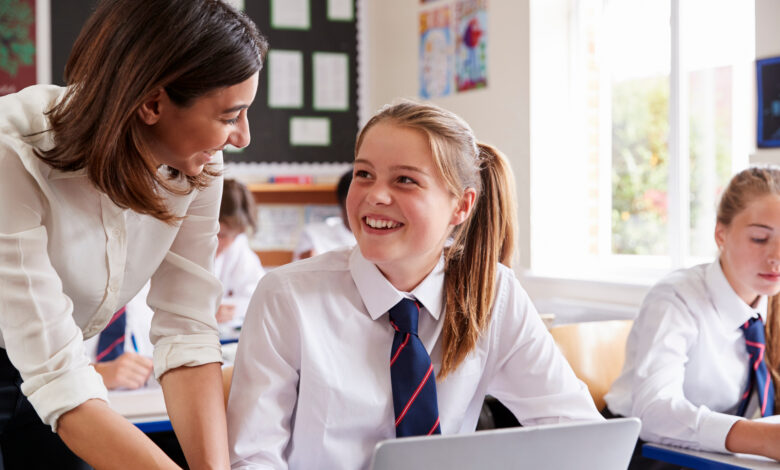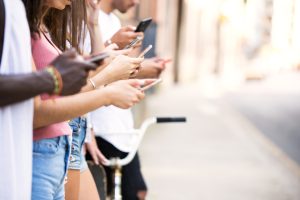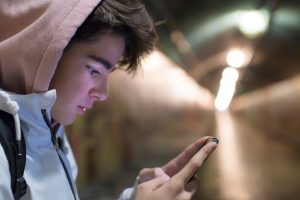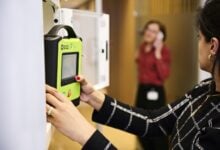Online safety in schools
Leanne Ross from Netsafe speaks to School News, answering key questions about online safety and digital policy in schools.

Since it became widely available in the late 20th century, computer technology has quickly become integral to education.
With the advent of the internet, and its vast wealth of information, safety and academic standards had to be revised as we grappled with new tools.
Read the latest print edition of School News HERE
In the modern age, schools are tasked with duties of care that extend to the digital realm students occupy. Social media and AI technologies present new challenges, and online safety is a concept that is increasingly evolving. Schools are tasked with designing policies for online safety that are appropriate for their students and context, and often have to respond to incidents that take place digitally.

Since the turn of the century, Netsafe has been supporting schools in Aotearoa to safety navigate online spaces. They’ve seen how the digital world has changed over the years, and they offer guidance for schools on creating policy and incident management.
Leanne Ross from Netsafe spoke to School News about commonly asked questions from schools and building a context-specific online policy.
What’s the most common issue schools face around online safety policies?
Schools are generally pretty on top of their online safety policies. However, the piece of the puzzle that schools struggle with is wraparound education – ensuring what is happening at school is happening at home.
So how can schools try and engage parents?
One of the big ways that Netsafe has been changing in the last 18 months is by creating “on demand” type materials that are much more interactive and shorter, and that people can do on their phones. That way, we can reach people through social media with little bite sized chunks.
We’ve done a project where we’ve taken some of Facebook and Instagram parents’ settings, and turned them into really bite size, little online modules for parents to go through rather than reading through huge PDFs.
For schools it’s similar: trying to respect [parents’] time limitations, trying to create things that are more interesting and easier to understand.
Also localising materials. A lot of material that exists in the world is very US centric. Creating a resource which talks about the different types of family setups we might have here, or cultural and community settings in New Zealand that could be different from other parts of the world. Localising can get a lot more engagement because we’re meeting people where they are.
Working with parents and communities in a partnership model around online safety discourse is really important.
AI has been a big topic recently. How can schools address this new technology?
We’re working with Microsoft to create an AI toolkit for teachers so they can take teenagers through it in the classroom, and maybe use language models as a research tool. The reason we’re doing that is because it’s a bit like driving – the best way to teach people is in a safe space actually using the tools. Instead of outright banning everything, if they know students are going to dabble in [AI technology] at home, then schools are a perfect environment to take them through it with a critical thinking lens.

What do young people want from schools regarding online safety?
Young people themselves ask for more guidance around “grey areas”. For example, there may be discussions on bullying – but what about banter that can be uncomfortable?
It’s not necessarily the school’s job to teach young people about all of these aspects of life, but schools are actually a great place for young people to hear about certain issues for the first time, and for them to have those conversations that help them to critically think about this digital world and help to keep each other safe.
What’s one cornerstone of an effective online safety policy?
Policies work best when it’s an all-of-school approach. That means two things. First, it means that it comes from the school: aligning policies and decisions you make around digital technology and online safety and aligning those with your school values.
That makes it easy for students and parents to understand how the behaviours and the practices all feed into the type of citizens that the school is wanting to bring into the world.

Secondly, in an all-of-school approach all stakeholders must be consulted. You have to work at board and the trustee level with their responsibilities and then you need to work with senior leadership so they understand how they can support everyone above and below them. Then there’s teachers, and they may have a different goal or needs around online spaces in the classroom.
There’s also a disclosure aspect: how to manage disclosures and navigating the harmful Digital Communications Act, especially around illegal material.
Then there’s the young people themselves and the wider community – the policy has to account for all these people otherwise it’s not really going to work for the school as a code.









